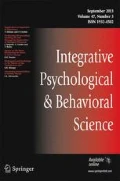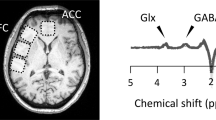Abstract
A resume of the history and concepts culminating in the work of Pavlov shows that there has been a gradual and slow elaboration toward a science of behavior. The past work has been oriented since the time of Locke increasingly toward the external environment. Pavlov’s theories, however, were directed toward forceswithin the nervous system. Further work from the Pavlovian Laboratories at Johns Hopkins and the V.A. (and elsewhere) indicate that the various physiological systems do not always work harmoniously, but that there is often a split in function (Schizokinesis)—changes occurring over a period of time—which do not seem to be referable to the external environment but to elaborations occurringwithin the organism (Autokinesis). These may tend toward improvement of function or, on the other hand, toward deterioration. The time has come when the progressive changes and the interrelationships of active fociwithin the organism should be considered as well as the reactivity of the individual toward the external environment.
Similar content being viewed by others
References
Adal, M. N., Barker D., and Ip, M. C.: The motor innervation of the mammalian muscle spindle. Paper read at XXIII International Congress of Physiological Sciences, Toyko, September 1965.
Ashby, W. R.: Design for a brain. New York, J. Wiley and Sons, 1960.
Bernard, C.: Les phénomènes de la vie. Paris, Hachette, 1878.
Brogden, W. J., and Gantt, W. H.: Intraneural conditioning: Cerebellar conditioned reflexes. Arch. neurol. Psychiat.,48: 437–455, 1942.
Bykov, K. M.: The cerebral cortex and the internal organs. (Tr. and Ed. by W. H. Gantt). New York, Chemical Publishing Co., 1957.
Cannon, W. B.: The wisdom of the body. New York. W. W. Norton, 1932.
Corson, S. A., Corson, Elizabeth OX., Pasamanick, B., and England, J. M.: The influence of restraint and isolation on physiologic baselines in conditioned reflex studies; the promise of telemetry. In Bio-Telemetry. London, Pergamon Press, 1963. Pp. 311–320.
Fleck, S., and Gantt, W. H.: Fractional conditioning of behavior based on electrically induce convulsions. Fed. Proc.,8: 47, 1949. (Abstract.)
Gantt, W. H.: Contributions to the physiology of the conditioned reflex. Arch, neur. Psychiat.,37: 848–858, 1937.
Gantt, W. H.: Experimental basis for neurotic behavior. New York: Hoeber, 1944.
Gantt, W. H.: Postscript to experimental induction of psychoneuroses by conditioned reflex with stress. In Milbank Mem. Fdn. The biology of mental health and disease. New York, Hoeber, 1952. Pp. 508–514.
Gantt, W. H.: Principles of nervous breakdown-schizokinesis and autokinesis. Ann. N. Y. acad. Sci.,56: 143–163 (a), 1953.
Gantt, W. H.: The physiological basis of psychiatry: The conditional reflex. In J. Wortis (Ed.) Basic problems in psychiatry. New York, Grune and Stratton, 1953. Pp. 778–798. (b)
Gantt, W. H.: Cardiovascular component of the conditional reflexes to pain, food and other stimuli. Physiol. Rev. Supp. 4,40: 266–291, 1960.
Jasper, H. H.: Mechanisms for the selection and preservation of acquired stimulus-response patterns. Paper read at XXIII International Congress of Physiological Sciences, Tokyo, September 1965.
Light, J. S., and Gantt, W. H.: Essential part of reflex arc for establishment of conditional reflex: Formation of conditioned reflex after exclusion of motor peripheral end. J. comp. Psychol.,21: 19–36, 1936.
Lynch, J. J.: Comparison of motor and cardiac systems of dogs in conditioning, extinction and reversal under three levels of discrimination training. Unpublished doctoral dissertation, The Catholic Univer. of America, 1965.
Newton, J. E. O., and Gantt, W. H.: Curare reveals central rather than peripheral factor determining cardiac orienting reflex. Amer. J. Physiol.,199: 978–980, 1960.
Page, I. H., and Helmer, O. M.: Crystalline pressor substance (angiotonin) resulting from reaction between renin and renin-activator. J. Exp. Med.,71: 29–42(a), 1940.
Page, I. H., and Helmer, O. M.: Angiotonin-activator, renin and angiotonininhibitor, and mechanism of angiotonin tachyphylaxis in normal hypertensive, and nephrectomized animals. J. Exp. Med.,71: 495–519(b), 1940.
Pavlov, I. P.: Work of the digestive glands. (Tr. W. H. Thompson). London, Griffin, 1910.
Pavlov, I. P.: Lectures on conditional reflexes. Vol. 1. (Tr. and Ed. by W. Horsley Gantt). New York, International Pub., 1941.
Rose, Jerzy: Personal communication, 1963.
Royer, F. L., and Gantt, W. H.: Effect of movement on cardiac conditional reflex. Condit. Reflex. In press.
Russek, M.: Personal communication, 1962.
Sechenov, I. M.: Reflexes of the brain. (Reflexsi golovnogo mazga.) Moscow, Academy of Medical Science, 1952.
Starr, A.: Personal communication, 1965.
Tislow, R.: Personal communication, 1965.
Wiener, N.: I am a mathematician: The later life of a prodigy. New York, Doubleday, 1956. P. 291.
Author information
Authors and Affiliations
Additional information
Read at Pavlovian Symposium, Tokyo, 5 September 1965.
Rights and permissions
About this article
Cite this article
Gantt, W.H. Reflexology, schizokinesis and autokinesis. Conditional Reflex 1, 57–68 (1966). https://doi.org/10.1007/BF03001086
Issue Date:
DOI: https://doi.org/10.1007/BF03001086




